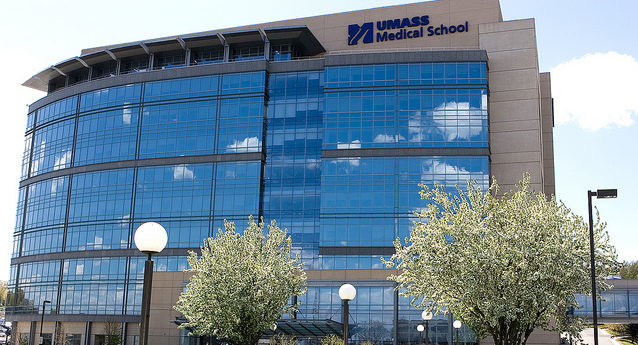
The Supreme Court declines to resolve issue of whether state hospitals can be sued for false insurance claims.
After Leo Villani, an employee of the University of Massachusetts Medical School, died, his coworker, Michael Willette, reviewed all of Villani’s estate documents as Villani’s personal representative. Willette allegedly learned that Villani had embezzled almost $4,000,000 in false claims from Medicaid.
When Willette informed the medical school, its administration allegedly retaliated against him, excluding him from meetings, denying him access to his work computer, and “verbally demean[ing] him.” Willette then sued the school as a whistleblower under the False Claims Act, which makes it illegal for any person to present a fraudulent claim to the government for payment.
After a series of appeals, the U.S. Supreme Court recently refused to hear Willette’s case from the United States Court of Appeals for the First Circuit in which the court ruled that the medical school was immune from lawsuits under the False Claims Act.
The False Claims Act allows for triple damages against any person who intentionally presents a fraudulent claim to the government for payment. These claims are often in the form of requests for payment for medical procedures from Medicare and Medicaid. The University of Massachusetts Medical School thus could have owed up to $12,000,000 to the federal government for Villani’s alleged embezzlement.
In a previous decision, the Supreme Court ruled that states were not “persons” and could not be sued under the False Claims Act. Still, the False Claims Act does not define who is a “person” who can be sued under the law. The First Circuit’s decision in Willette’s case now joins a series of other decisions from federal appellate courts in defining when an institution, in this case a medical school, is considered part of a state government and therefore not a “person.”
The implications of the First Circuit’s holding are far-reaching. According to the American Hospital Association, state or local governments run roughly 25 percent of hospitals in the United States. Under the First Circuit’s decision, this could mean that up to 25 percent of hospitals cannot be sued under the False Claims Act.
For example, in June 2016, the University of Missouri, a public land-grant university, paid the United States $2.2 million in order to settle allegations that it had violated the False Claims Act. University staff had allegedly submitted fraudulent claims for radiological treatment. Had a state university made those same fraudulent radiology claims in Maine, Massachusetts, New Hampshire, Puerto Rico, or Rhode Island—those districts that are included in the First Circuit—such a case could not have been successfully brought.
In determining whether the medical school was an “arm of the state,” the First Circuit employed a two-part test.
First, the state must have indicated an intention that the entity, as a state institution, cannot be sued simply because it is a state, a legal concept called “state sovereign immunity.” The state could delegate this immunity explicitly by writing it into the law creating the entity, or implicitly through its structuring of the institution. If it is clear that the state intended the institution to act as an arm of the state, it cannot be sued under the False Claims Act.
If, however, it is unclear whether the state intended that the institution be considered an arm of the state, then the court must consider whether the state treasury would be at risk if it allows the suit.
In Willette’s case, the court held that the medical school was an arm of the state and therefore not a “person” under the False Claims Act, stopping at the first part of its two-prong test. The court cited six reasons, which generally can be categorized as either governmental or financial.
In analyzing the governance of the medical school, the First Circuit considered four factors. First, the medical school is a “public institution of higher learning within the system of public higher education.” Generally, public universities are considered “arms of the state” and therefore have immunity. Second, the medical school, and the larger state public education system of which it is a part, is governed by “a board of trustees with nineteen voting members, sixteen of whom” were directly appointed by the governor.
The court also held that the state supervised the medical school “in carrying out its educational mission.” For example, the Massachusetts Secretary of Education or the Board of Higher Education must approve the school’s mission statement, admissions standards, and proposed instruction programs. Furthermore, the medical school’s campus is located on state property, and its employees are considered state employees.
Finally, Massachusetts state courts have determined that the University of Massachusetts, including the medical school, and the state are “one and the same party, namely the Commonwealth of Massachusetts.”
Concerning finances, the court looked both at the medical school’s budget and the state’s responsibility in lawsuits against the medical school. First, the Massachusetts Secretary of Education reviews and approves the medical school’s budget. Second, the state government is responsible for financing any lawsuits in which the school is involved.
Ultimately, the court’s decision joins the majority of other Courts of Appeals in holding that claims under the False Claims Act cannot be brought against an “arm of the state.” The “arm of the state” test is in line with previous holdings from the Fourth, Fifth, Sixth, Ninth, Tenth, and Eleventh Circuits.
The photograph of the University of Massachusetts Medical School is used from Flickr under a creative commons license and has been modified to match The Regulatory Review‘s website conventions.



